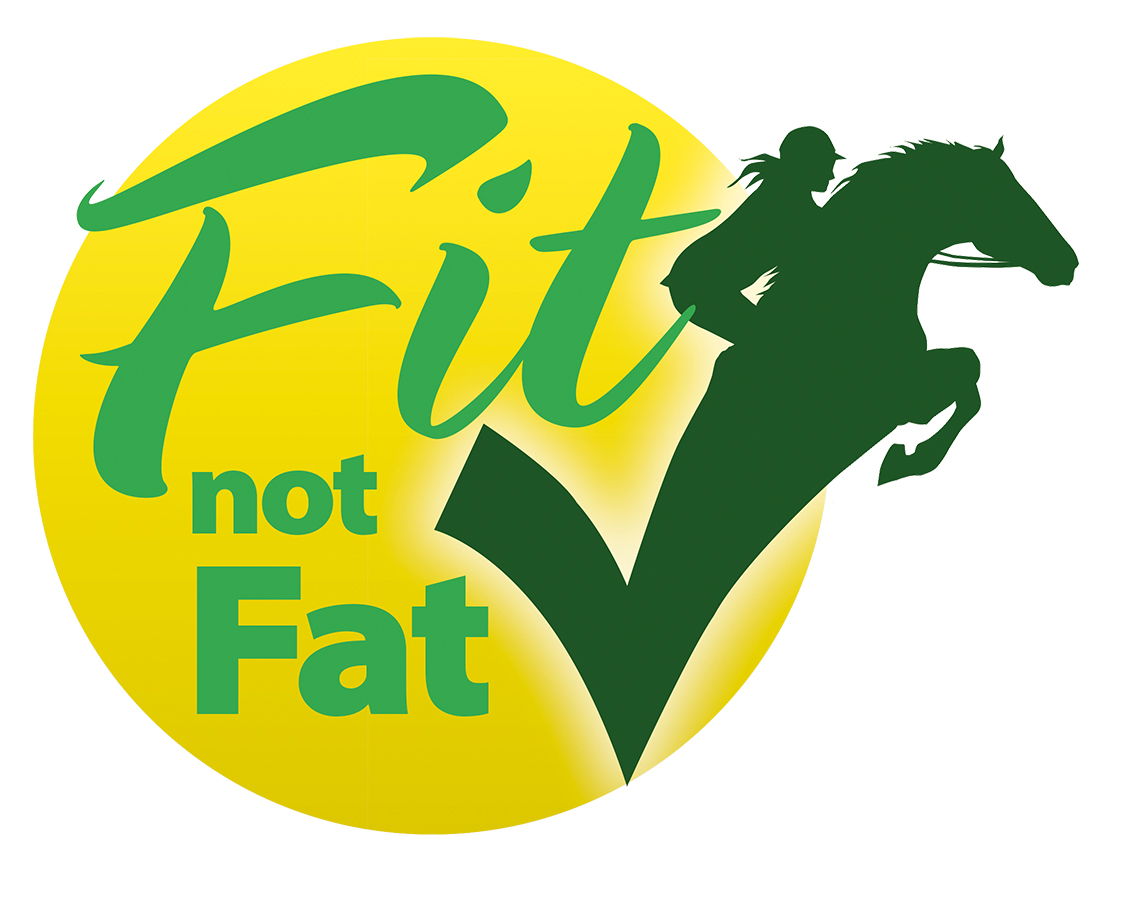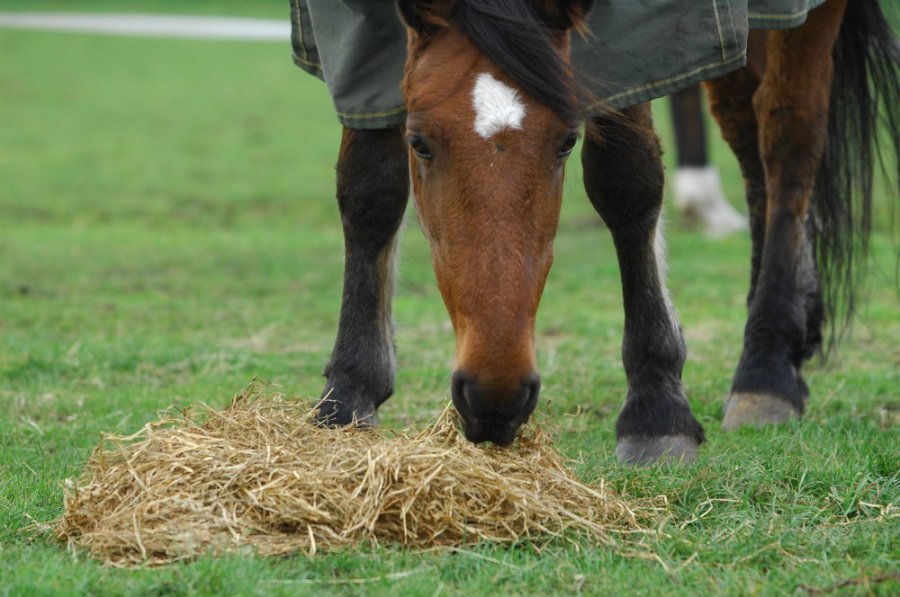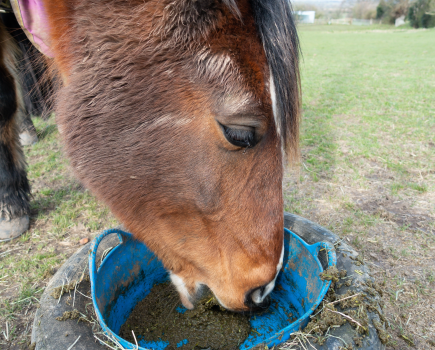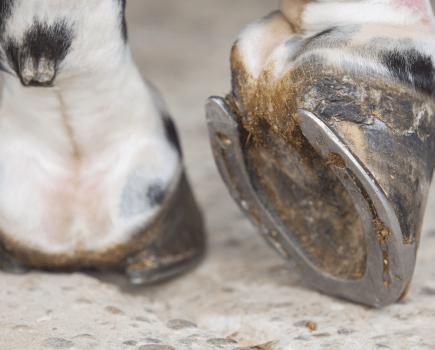The bulk of your horse’s diet and the majority of his energy should come from forage. This is key for a happy hindgut and a healthy horse who is #fitnotfat. At the same time, controlling forage intake is essential in maintaining a healthy bodyweight and a forage-based diet often does not provide all the vitamins and minerals that your horse requires.
In the wild, horses spend most of their time grazing on low-energy forage sources compared with that to which our domesticated friends now have access. As a result, keeping our horses fed sufficiently and within the correct energy balance to maintain a healthy weight can be challenging. However, a regular flow of fibre through your horse’s system is the key to overall digestive health.
How much forage is right?
Ad-lib forage is ideal for your horse if they are able to maintain a healthy weight. Your horse should receive at least 1.5-2% of his bodyweight each day in forage dry matter. This can be reduced to 1% of bodyweight when working towards weight loss, but should not be reduced further.
It is especially important when we are restricting forage intake to feed little and often throughout the day, so that the digestive system is regularly receiving fibre. Haynets with small holes can slow your horse’s eating down and make their hay last a bit longer.
Never drop your horse’s forage intake below 1% of bodyweight dry matter per day and remember to include any grazing in this calculation. Depending on his current diet, forage type and weight loss requirements, 1.5% bodyweight can be a good starting point, reduced further as/if required.
What is dry matter in forage?
Dry matter is the weight of your horse’s forage minus its water content. It can be estimated depending on its type, but this can be highly variable. Different types of forage have different dry matter weights. For example, grass has a higher water content and therefore lower dry matter weight than hay, so more must be consumed to meet the same volume of dry matter.
Your horse should receive at least 1.5-2% of their bodyweight in forage dry matter per day. This can be dropped to as low as 1% of bodyweight when working towards weight loss, but should not be reduced further. The best way to ensure you are feeding the correct amount of forage — and that you are feeding enough to maintain optimum digestive health during weight loss — is to have your hay analysed to check its quality.
This involves sending a sample to a lab to be tested and is something with which your feed company or veterinary practice may be able to assist. Analysis will provide information about the dry matter, energy, sugar, starch and protein content of your forage, among other things. Values are often given in percentages.
How to calculate dry matter in forage
If your hay has a dry matter content of 90%, and you are feeding your 500kg horse for weight loss — i.e. 1% body weight forage dry matter daily:
- 500kg x 0.01 (1%) = 5kg forage dry matter daily
- 5kg ÷ 0.9 (90%) = 5.6 kg of hay daily
For weight maintenance of a 500kg horse with 90% dry matter content hay:
- 500kg x 0.015 (1.5%) = 7.5kg forage dry matter daily
- 7.5kg ÷ 0.9 (90%) = 8.3 kg of hay daily
It should be noted that these calculations are for a horse receiving hay only. Any concentrate feeds or access to grazing should be factored in when calculating forage requirements for weight loss. Horses allowed free access to any forage source (including grass) can ingest up to 5% of their bodyweight daily.
Remember, all forage is not equal
All forage is NOT created equal and you should feed lower energy forage types to encourage weight loss. While the overall energy content is usually higher in haylage compared to hay, haylage has a higher water content and lower dry matter intake, which can balance out its higher energy levels.
Soaking hay will further reduce its sugar and calorie content. Forage analysis and follow up consultation can be helpful in ensuring your horse’s needs are being met and that their overall diet is well balanced.
Bear in mind too that grass varies greatly in the energy it provides, particularly in the summer compared to winter months.
During the summer, grass is a high energy forage type and restriction is often necessary to trigger weight loss or prevent your horse from becoming overweight. Reduced time spent turned out, smaller paddock size or strip grazing, and grazing muzzle use can all be helpful in reducing grass intake.
Meeting your horse’s daily dietary requirements
Forage alone won’t provide a full and balanced diet. A low-calorie balancer or vitamin and mineral supplement can be fed alone or alongside a low energy chaff and is often enough to meet daily requirements.
Other options include fully balanced low-energy chaffs or low-calorie treats containing daily vitamins and minerals. They must be fed at the recommended amounts in order to meet your horse’s needs.
Don’t forget to factor in exercise. You should consider your horse’s workload carefully, as many ridden horses’ energy requirements can be met without high-energy concentrate feeds.
A programme of gradually increasing exercise in conjunction with dietary management is helpful for weight loss.
 Have you heard about Your Horse’s #FitNotFat campaign? Equine obesity is an enormous welfare problem and we’re on a mission to provide owners and riders with the knowledge, skills and information you need to keep your horse in tip-top health. It could be life saving! Find out more
Have you heard about Your Horse’s #FitNotFat campaign? Equine obesity is an enormous welfare problem and we’re on a mission to provide owners and riders with the knowledge, skills and information you need to keep your horse in tip-top health. It could be life saving! Find out more
Look what’s inside the latest issue of Your Horse








